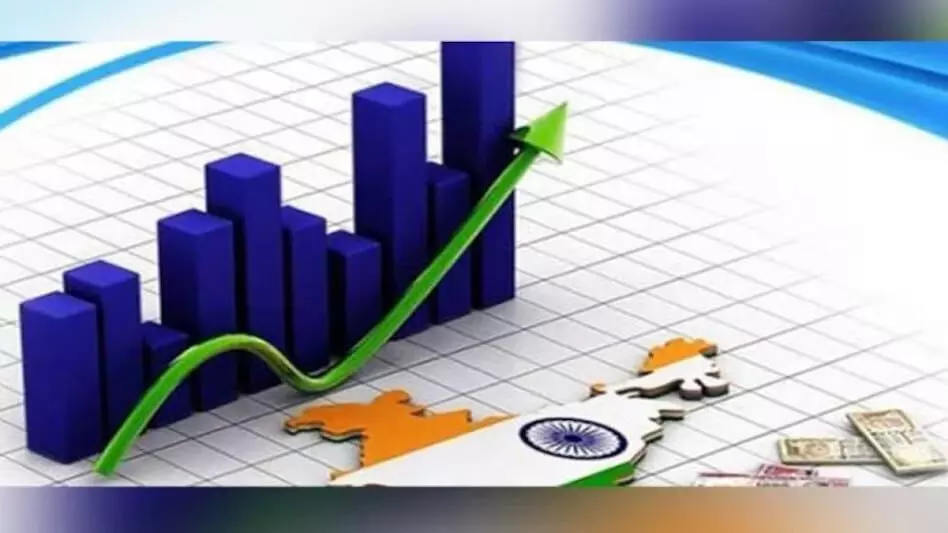India’s Ascent to the Fourth-Largest Economy Is Impressive—But the Harder Climb Lies Ahead

On May 25, 2025, B.V.R. Subrahmanyam, the CEO of NITI Aayog, proudly announced that India is now the fourth-largest economy in the world. With a nominal GDP of $4.19 trillion, India has officially moved past Japan. It's a moment of pride for the nation. A moment that reflects years of reform, a youthful population, and deeper global economic engagement.But this is more than just a symbolic milestone. It shows that India’s voice is growing louder in the global economic arena. Yet as the country sets its sights on overtaking Germany to claim the third spot, the road ahead will demand far more than just ambition, and it is riddled with challenges. Some of these challenges are:
Rich V/s Poor Gap
One of the most urgent concerns is the rising gap between the rich and the poor. Even though the GDP numbers are impressive, the benefits haven’t reached everyone. The top 1 percent of Indians hold over 40 percent of the country’s wealth, while a large share of the population is still struggling to see any real change in their lives. If this imbalance persists, it could compromise social harmony and diminish consumer demand, which is the very force that drives much of our economy. What India needs now are stronger policies that create better opportunities for more people and help spread prosperity more evenly.
Higher Unemployment Rate
Despite Prime Minister Narendra Modi’s ambitious call for Atmanirbhar Bharat, employment is still an area that needs immediate attention. India has a young, vibrant population, but not enough jobs to match. Many educated youths are either unemployed or have stopped looking for work altogether. Women, in particular, are missing from the workforce in large numbers. If India fails to create quality jobs and invest in skill-building, its demographic dividend might become a missed opportunity.
Underperforming Manufacturing Sector
The manufacturing sector, often seen as the engine for job creation, is still underperforming. The goal to raise manufacturing’s share of GDP to 25 percent remains distant—it’s stuck around 17 percent. Poor infrastructure, complex regulations, and shifting policies keep investors cautious. To fix this, India must focus on improving the ease of doing business, strengthening logistics, and ensuring policy continuity.
Climate Change Threat
Climate change, while slower in its impact, is just as threatening. Agriculture supports millions of Indians but is highly vulnerable to floods, droughts, and changing weather patterns. If climate issues are not addressed, they could shave off nearly a quarter of India’s GDP by 2070. Investing in green energy, sustainable farming, and climate-resilient infrastructure is not just smart—it's necessary for India’s long-term survival.
Improving Human Capital
Human capital is the foundation of any strong economy, and here, too, India has a lot of work to do. Rural schools often lack good teachers and infrastructure. Dropout rates are still high. Many marginalized communities, like tribal populations, don’t have access to quality education after primary school. To prepare the country’s human resources for the future, India must reimagine its education system to make it more inclusive, relevant, and effective.
More than Basic Healthcare
Healthcare is another area that can’t be ignored. Millions of people still don’t have access to basic medical services, especially in rural regions. The public healthcare system is stretched thin, and high out-of-pocket expenses are pushing families into poverty. Strengthening this sector isn’t just the right thing to do—it also makes economic sense. Healthy people contribute more, innovate more, and help build a stronger nation.
India can unlock significant growth potential if it modernizes its financial rules, improves access to credit, eases restrictions on foreign ownership in banking, and providesa fair playing field to its small business owners. The global landscape will also shape India’s growth path with economic slowdowns across major countries, supply chain upheavals, and geopolitical scuffles. Although India has learned, in recent years, to build diverse trade ties and strengthen domestic demand, it needs to do more to stay resilient. India’s rise to the fourth spot is not the finish line, it is the starting gunshot for the race ahead. By dealing with its structural challenges, India won’t just imagine itself as a global economic leader. It will become one.
(The writer is a seasoned Banker and Mortgage Specialist working for India’s largest loan interest distributor company and occasional political commentator.)
